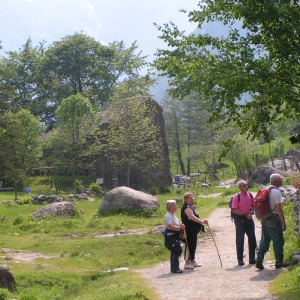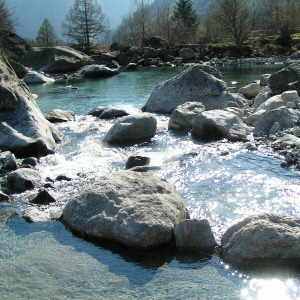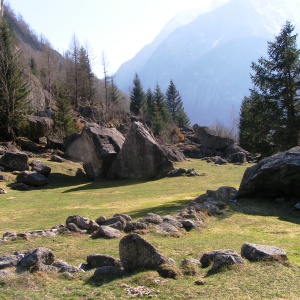
Val di Mello
This post is also available in:
 Italiano (Italian)
Italiano (Italian)
Val di Mello is a lateral valley of Val Masino, in the province of Sondrio. It is regarded as one of the most evocative areas in the Alps, and it was officially acknowledged as a natural reserve in 2009 – thus becoming the largest protected area in Lombardy. Its purpose is the protection of the natural landscape, as well as the conservation of local flora and fauna.
Val di Mello is divided into three areas, with different levels of protection: the “integral” nature reserve (maximum protection), the “oriented” nature reserve, and a “partial” nature reserve (of landscape interest on the valley floor).
The valley actually stretches from the village of San Martino to Mount Disgrazia heights; it runs horizontally, so its left side faces north – quite shady and with short and very steep valleys, pretty wild and not that popular among hikers and climbers. The right side, facing south, features some large secondary valleys, with hundred meter-high granite walls, alternating plains, and high waterfalls. Several streams cross the valley, with large pools very popular among visitors.
Val di Mello is the favourite destination for rock climbers, mountaineers and bouldering lovers (climbing on boulders), as well as peaceful hikers. It is, in fact, full of pleasant walks, including the famous high-altitude path, called the “Rome trail”, which connects the secondary valleys.
It is crossed by a stream which forms large pools in which visitors can safely swim.
Speaking of sports, the valley offers about twenty walls and countless large boulders, on which more than 2000 passages are already marked. Every year, the “Melloblocco” event takes place in the valley, gathering hundreds of international athletes.
FAUNA
In Val di Mello, almost the entire mountain and alpine fauna can be found. Among the ungulates, chamois is the most numerous species, but also the ibex, after having been reintroduced in the 1980s, together with roe deers and deers. There are also groundhogs, white hares, and at higher altitudes, white partridges (threatened of extinction), black grouses, foxes, martens, and beech martens. True eagles are also abundant.
The streams offer the best habitat to brown and rainbow trouts.
The locals skillfully built transhumance huts and support structures for centuries, as mountain pastures used to be a vital activity.
FLORA
Upon entering Val di Mello, there’s a wood of beeches (Fagus selvatica) and silver firs (Abies alba), often found next common laburnum (Laburnum anagyroides). Right above that area, there are woods of Norway spruces (Picea abies) and Scots pines (Pinus sylvester).
At the edge of the woods and in the clearings, there are several herbaceous species like Crane’s-bills (Geranium spp. ) and orange lilies (Lilium bulbiferum).
On the North side, there are green and grey alders (Alnus viridis, Alnus incana), while alpenroses (Rhododendron ferrugineum), European larches (Larix decidua), mountain pines (Pinus mugo), and birches (Betula spp. ) can be found higher up.
On the South side, on stony ground and snowy moraines, the typical Central Alps flora is particularly abundant. Screes mostly features spleenworts (Asplenium cuneifolium) – a narrow-leafed type of fern – and Bavarian gentian (Gentiana bavarica).
Moraines is where leopard’s bane (Doronicum spp. ), simple Leaved Milfoil (Achillea herba-rota ssp.) ,moschata), snow-in-summer (Carastium tomentosum), wood-rush (Luzula spp. ), and willowherbs (epilobium spp. ) can be found.
At much higher altitudes, there are Primula salisii, a precious endemic species and a hybrid between Primula irsuta and Primula viscosa.
This post is also available in:
 Italiano (Italian)
Italiano (Italian)


